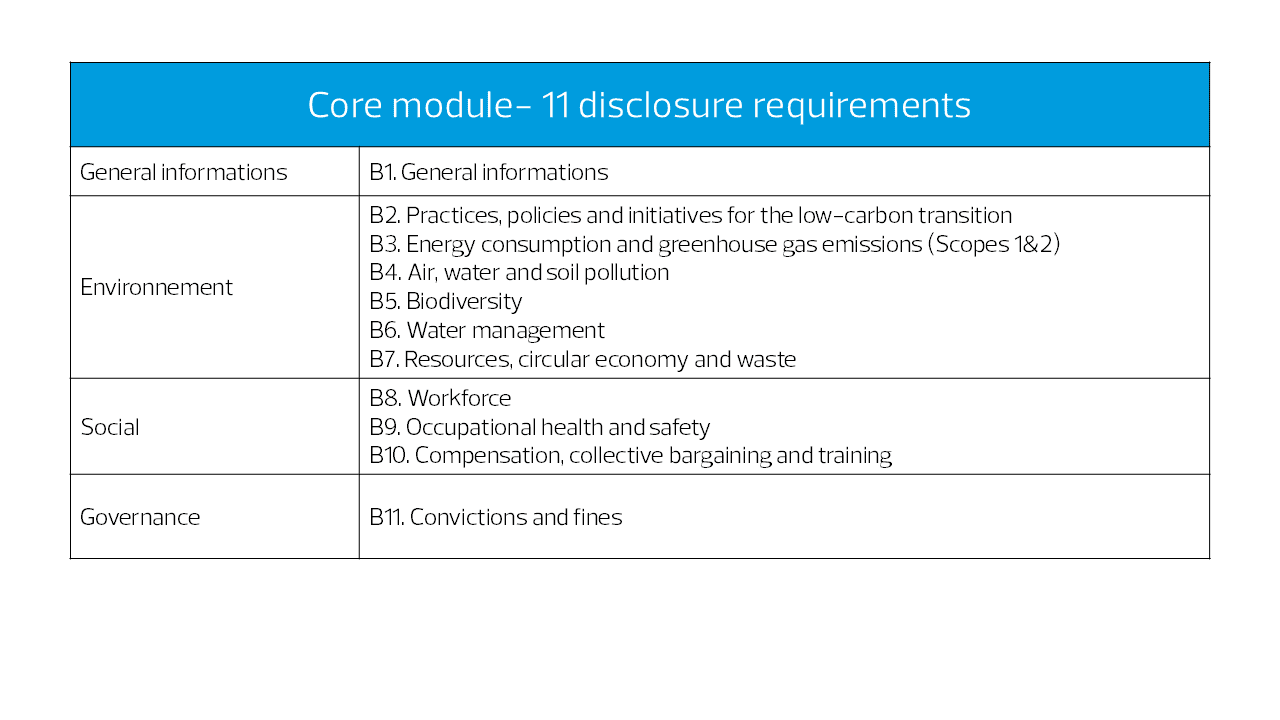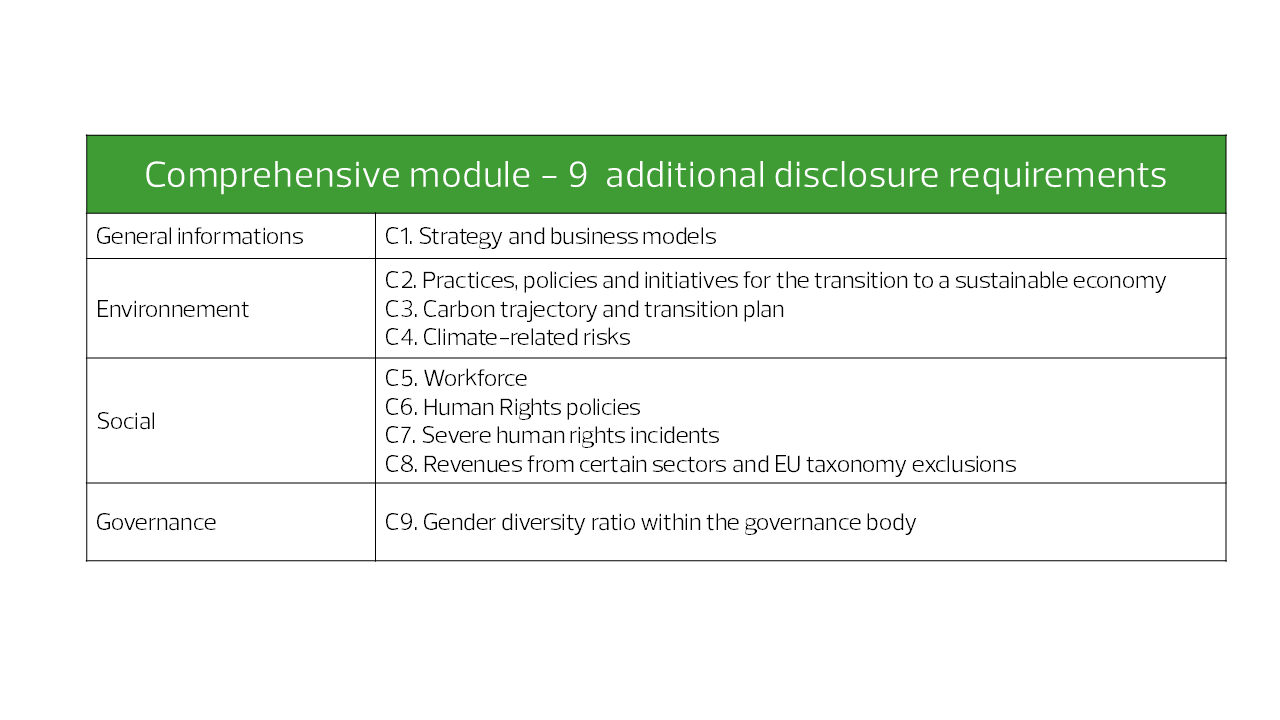Key takeaways
Environmental, social, and governance (ESG) issues are central to corporate concerns. The Corporate Sustainability Reporting Directive (CSRD) imposes a stringent sustainability reporting framework on large companies. However, on April 1st and 3rd, 2025, the European Parliament voted in Strasbourg under the emergency procedure for the so-called “Stop the Clock” directive, part of the Omnibus package. This initiative, led by the European Commission, seeks to suspend for two years the application of the CSRD (sustainability reporting) and CS3D (corporate due diligence) directives.
The aim of the Parliament is to ensure that the “Stop the Clock” directive is transposed into national law by the end of 2025, thereby offering a measure of legal certainty to covered entities—particularly those affected by wave 2 (companies initially required to report in 2026 on the 2025 fiscal year). As such, the “Stop the Clock” directive was published in the Official Journal of the European Union on April 16, 2025, and is expected to be transposed into French law shortly.
However, “Stop the Clock” does not equate to pausing ESG efforts: the directive strongly recommends that companies falling outside the revised CSRD scope adopt the voluntary Voluntary Sustainability Reporting for Medium-Sized Enterprises (VSME) standard, developed by EFRAG. Originally designed for SMEs, this framework aims to enable non-CSRD entities to effectively structure and communicate their sustainability commitments while meeting the growing transparency expectations of stakeholders. Simultaneously, it serves to shield companies from excessive information requests by CSRD-covered large enterprises.
VSME : structure and benefits
What is the structure of the VSME standard?
The VSME standard offers two tiers: the “Core Module” and the “Comprehensive Module.”
Companies may begin with the Core Module and later supplement it with the Comprehensive Module. This modularity allows businesses to align reporting with their level of engagement and stakeholder expectations.
- Core Module : this module covers the minimum requirements necessary to ensure transparency in non-financial disclosures. It consists of 11 disclosure requirements and 49 data points structured around ESG themes (environmental, social, and governance). Topics include general company information, sustainability commitments, energy consumption and GHG emissions (Scopes 1 and 2), water management, working conditions, anti-corruption measures, and more.

- Comprehensive Module: : For businesses aiming for more advanced reporting, this module adds 9 additional disclosure requirements and 30 data points that complement the core module. These include data likely to be required by business partners (banks, investors, large corporations), such as CSR strategy, climate transition plans, GHG emissions reductions including full carbon footprint (Scopes 1, 2, and 3), climate risk assessments, human rights incidents, revenue from controversial activities, and others.

Tangible benefits for companies
Adopting the VSME standard brings multiple advantages in terms of competitiveness, internal organization, and transparency. It enables companies to meet increasing sustainability expectations while generating long-term value. Key benefits include:
Competitive Advantage:
- Enhanced market position and improved reputation with consumers
- Easier access to public procurement and sustainable finance, as the standard was co-developed with financial sector stakeholders (e.g., banks, investors)
- Low reporting costs
- Increased business model resilience
- Minimal risks of disclosing sensitive competitive information
Improved Internal Organization:
- Clearer sustainability strategy through a precise identification of ESG issues
- Increased awareness of ESG risks and opportunities, positively impacting business management (e.g., cost reductions through environmental impact mitigation)
- Positive effects on employee attraction and retention
Transparency:
- Greater legitimacy, especially with local communities, stakeholders, and regulators
- Improved availability and credibility of reported sustainability data
- Stronger corporate brand image
Why adopt the VSME standard?
In a context where ESG transparency has become a critical competitiveness factor, the VSME standard offers a pragmatic tool to structure sustainability communications. Though not a regulatory obligation, it enables companies to anticipate market expectations, enhance internal processes, and increase attractiveness to investors, clients, and partners.
Choosing to engage in voluntary reporting today is a strategic move for the future. Adopting the VSME means turning sustainability into a long-term differentiator and performance driver.
VSME standard : what are the key implementation steps ?
VSME implementation can be phased in according to each company’s maturity and resources. While EFRAG does not mandate a specific methodology, several essential steps can guide the deployment of structured, effective reporting. From initial assessment to report publication, here are the essential pathways to prepare VSME reporting tailored to each organization’s reality:
Assess ESG maturity
Before aligning with the standard, companies must assess their current level of sustainability engagement, including existing practices. Depending on this maturity, they may opt for the Core Module (basic) or the more exhaustive—and often more valuable—Comprehensive Module. This assessment also helps identify improvement areas and prioritize actions to align with VSME reporting requirements.
Internal Awareness and Engagement
Securing leadership support and employee engagement is essential. All employees and management must be made aware of ESG issues, the benefits of a structured approach, and how to report in compliance with regulatory expectations. This phase also helps identify key contributors and clarify roles and responsibilities in data collection and standard implementation. Such an approach ensures a shared understanding of objectives and effective practice adoption across all organizational levels.
Data collection and structuring
Setting up a reliable data collection system is vital to measure and monitor sustainability performance. This includes identifying key data, mapping relevant sources, and establishing consistent monitoring processes.
Drafting and communicating the VSME report
Once data is collected, it must be analyzed, structured, and presented in accordance with VSME requirements. This phase ensures transparent reporting on actions and outcomes, while also ensuring compliance with the standard. The company may then publish and share the report with stakeholders, on an annual basis, similarly to CSRD reporting formats.
The VSME standard is a key opportunity for SMEs wishing to structure their ESG approach, enabling companies to gain in clarity, credibility and sustainable performance. By facilitating the collection of extra-financial data, it improves internal organization, while meeting the growing expectations of financial partners, customers and authorities. The VSME standard represents a strategic lever: by adopting it, SMEs transform sustainability into a competitive advantage and position themselves as committed players in the transition. A voluntary approach today, but essential to remain competitive.
- VSME : Practical guidance for simplified ESG reporting - November 26, 2025
For tailored responses, aligned with the specific challenges and characteristics of your company, RSM partners and their multidisciplinary teams are at your service across France’s key economic regions.
Discover our ESG & Sustainable Finance services.






